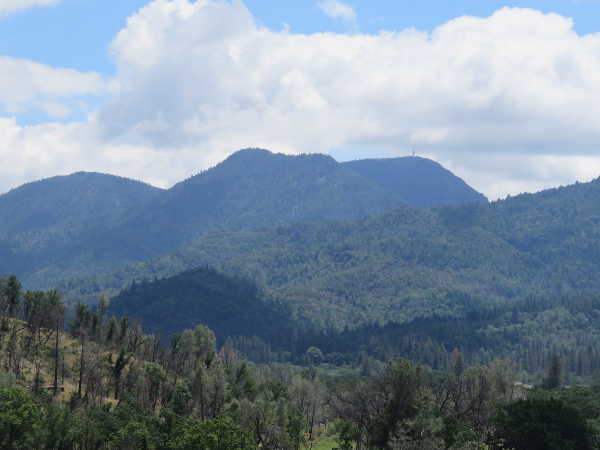
"To be whole. To be complete. Wildness reminds us what it means to be human, what we are connected to rather than what we are separate from." – Terry Tempest Williams
LAKE COUNTY, Calif. – We all travel it, and many gaze upon its silent majesty which emerges grandly above southern Lake County.
But did you know that this 4,339 foot mountain spans three counties? Lake, Napa and Sonoma counties all claim Mount St. Helena's rocky countenance.
According to geologists, the fir-trimmed mountain resides in the Clear Lake volcanic field, which has been active for the past two million years.
Although Mount St. Helena is not a volcano, a powerful volcanic eruption took place in its vicinity, in an approximately one-mile radius of the mountain.
This all transpired more than 3.4 million years ago, and the results of the volcanics contributed to the formation of Napa Valley's Petrified Forest.
There are many layers of wonder that comprise Mount St. Saint Helena's past. Besides its geologic past, there are untold stories encompassed in its numerous trails, some of which were utilized by past Pomo and Wappo peoples who traveled all the way to the coast to trade.
The Wappo Indians called the mountain, "Kanamoto," or "human mountain," as it resembled a woman reclining. Then, the mountain was deeply respected by the Wappo.
In its more recent history, during its pioneer past, Mount St. Helena was a haven of mining – a little gold and a little silver, as well as being a stagecoach route for intrepid travelers up and down the mountain.
Most of us recall that writer Robert Louis Stevenson (“Treasure Island,” “Kidnapped,” “Strange Case of Dr. Jekyll and Mr. Hyde”) convalesced on the mountain.
Stevenson suffered from ill health, so in 1880 he and his new bride, Fanny, traveled to the Napa Valley and honeymooned at the abandoned mining camp on Mount St. Helena.
The stay on the mountain spawned his book, “The Silverado Squatters,” which details his mountain experiences.
Stevenson wrote of the mountain, "Its naked peak stands nearly 4,500 feet above the sea; its sides are fringed with forest; and the soil, where it is bare, glows warm with cinnabar. Life in its shadow goes rustically forward. Around the foot of that mountain the silence of nature reigns in a great measure unbroken, and the people of hill and valley go sauntering about their business as in the days before the flood."
Stevenson died in December of 1894 in Samoa at the age of 44.
Today, just past the Lake County border, the mountain's trails are accessed for hiking at Robert Louis Stevenson State Park, which was established in 1949.
If you make it to the summit, you will witness spectacular views, with a 360-degree vista. On a clear day you can view Mount Tamalpais, Mount Diablo, the Sierra Crest and sometimes even a bit of Mt. Shasta.
Along with spectacular views at the top of the mountain, there is a myriad of flora to observe. There are more than 400 species of plants in the park alone. Its diverse plant families include grasslands, chaparral, oak woodlands and evergreen forests.
Although there are many introduced European grasses and bromes, there remain native California bunchgrasses and a diversity of wildflowers.
Kathleen Scavone, M.A., is a retired educator, potter, freelance writer and author of “Anderson Marsh State Historic Park: A Walking History, Prehistory, Flora, and Fauna Tour of a California State Park” and “Native Americans of Lake County.”

 How to resolve AdBlock issue?
How to resolve AdBlock issue? 





